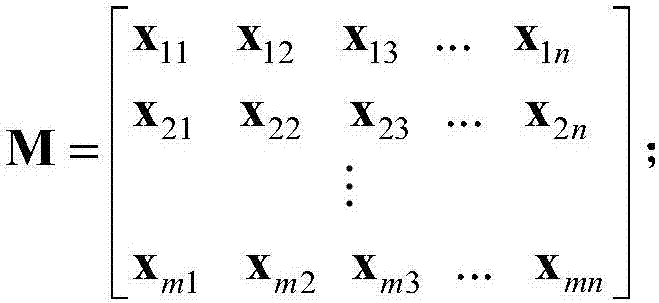Synchronous Optimization Method of Electronic Nose Parameters Based on Improved Quantum Particle Swarm Optimization Algorithm
A technology of particle swarm algorithm and optimization method, which is applied in the field of synchronous optimization of electronic nose parameters based on improved quantum particle swarm algorithm, can solve the problems that standard quantum particle swarm cannot be guaranteed, and achieve the increase of particle ergodicity in the early stage and local optimization in the later stage ability, improve the recognition rate, and reduce the effect of calculation
- Summary
- Abstract
- Description
- Claims
- Application Information
AI Technical Summary
Problems solved by technology
Method used
Image
Examples
Embodiment Construction
[0030] The specific implementation manner and working principle of the present invention will be further described in detail below in conjunction with the accompanying drawings.
[0031] The electronic nose data used in this example were collected from 20 6-8 week-old male Sprague-Durer rats weighing 225-250 grams, and each experiment was carried out under normal pressure, constant temperature and the same indoor environment humidity. under the conditions. In addition, all male Sprague-Dürer rats were in the same class for size, weight, and health.
[0032] Data collection: 20 rats were randomly divided into four groups, including 1 non-infected group and 3 infected groups infected with Pseudomonas aeruginosa, Escherichia coli and Staphylococcus aureus respectively. In the first step of the experimental stage, a small opening about 1 cm in length was cut out on the hind legs of each mouse, and then 100 ul of Pseudomonas aeruginosa or Escherichia coli or Staphylococcus aureus ...
PUM
 Login to View More
Login to View More Abstract
Description
Claims
Application Information
 Login to View More
Login to View More - R&D
- Intellectual Property
- Life Sciences
- Materials
- Tech Scout
- Unparalleled Data Quality
- Higher Quality Content
- 60% Fewer Hallucinations
Browse by: Latest US Patents, China's latest patents, Technical Efficacy Thesaurus, Application Domain, Technology Topic, Popular Technical Reports.
© 2025 PatSnap. All rights reserved.Legal|Privacy policy|Modern Slavery Act Transparency Statement|Sitemap|About US| Contact US: help@patsnap.com



